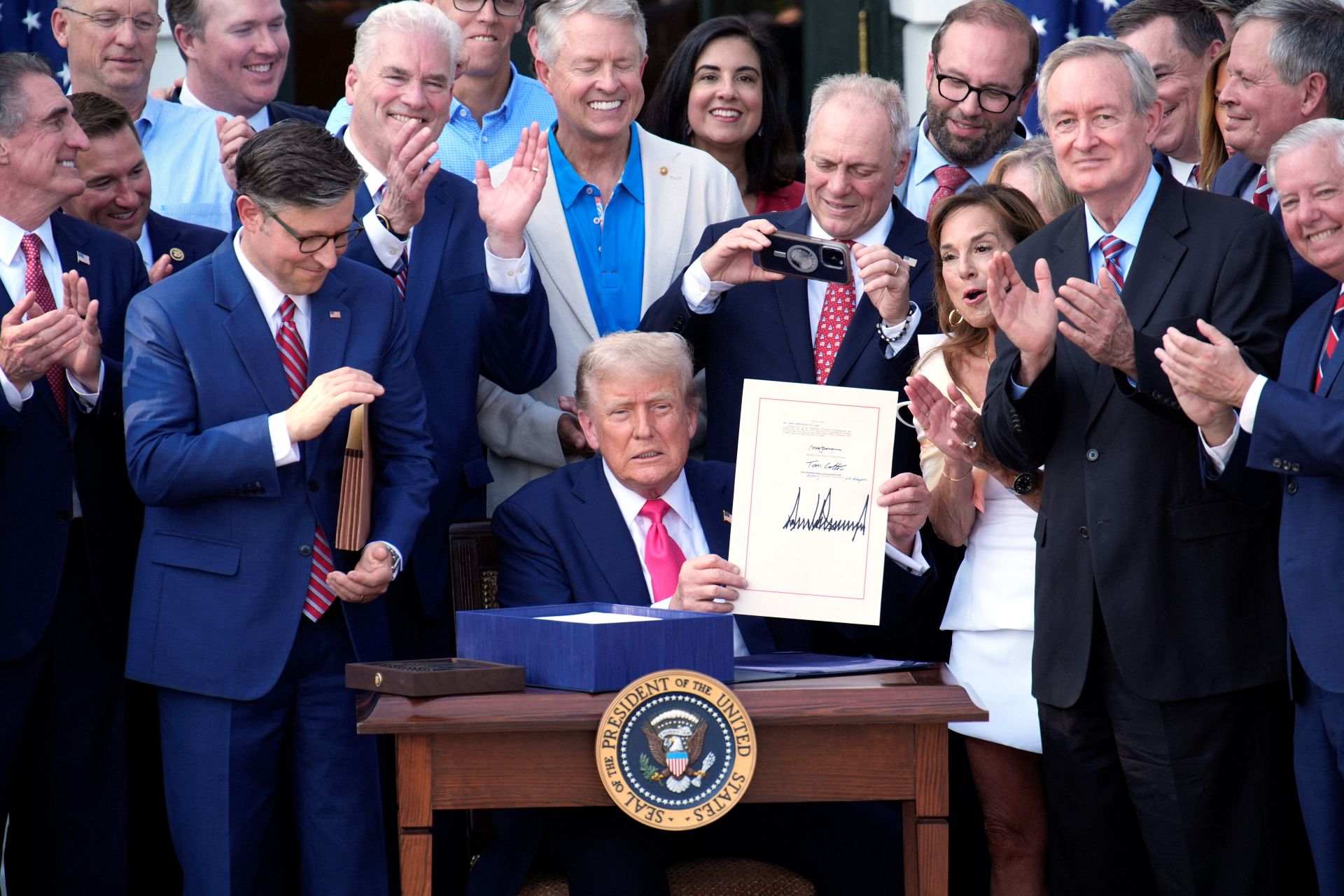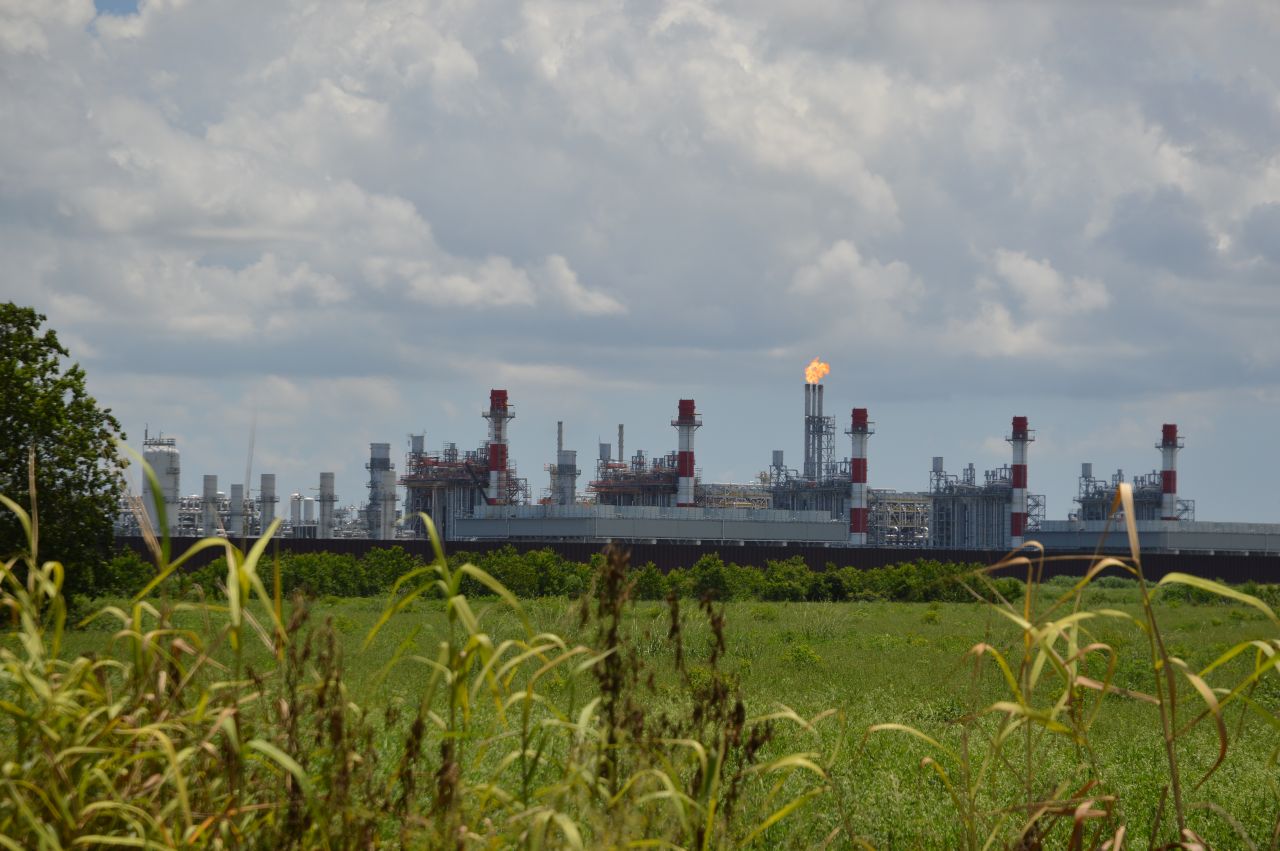In Trump’s ‘Big Beautiful’ bill, ugly contradictions and giveaways to industry

In the runup to President Trump’s signing of his “Big Beautiful” spending bill on July 4, some climate activists wondered if Republicans would eliminate all federal subsidies for carbon capture projects, because Trump thinks climate change is a hoax.
But the opposite happened. The $4 trillion spending package increases federal subsidies for carbon capture – as long as the captured gas is pumped underground with the purpose of forcing out more oil and gas to burn.
Trump campaigned on lowering energy prices for consumers. But his spending bill is expected to raise average household energy costs by about $280 per year, in part because it cuts support for wind and solar, which are some of the cheapest forms of energy.
The administration also claimed to be fighting against deficits. But then the megabill sharply reduced the royalty rates that oil and gas companies – which have been earning record-breaking profits – must pay to the government to drill on public lands.
These are just a few of the contradictions in Trump’s “One Big Beautiful Bill,” which eliminates or phases out subsidies for electric cars, clean energy, and energy-efficient appliances, while providing tax breaks and subsidies for oil and gas companies and opening up more federal lands and offshore areas for drilling and mining.
“This bill has billions of dollars of giveaways to oil and gas companies by reducing royalty rates and ordering more public lands and waters to be put up for lease,” said Dan Cohan, professor at Rice University and author of “Confronting Climate Gridlock.” “This is a huge giveaway to the industry at a time when they were looking for savings to fund tax cuts for the rich. It’s a very odd choice to do all this.”
Among other things, the Inflation Reduction Act, signed into law by President Biden in 2022, for the first time in over a century raised the royalty rates that oil and gas companies must pay for drilling on public land to at least 16.7 percent. Trump’s bill knocks that down about a quarter, to at least 12.5 percent.
The bill also requires the Department of the Interior to conduct at least 30 offshore lease sales for drilling rights in the Gulf of Mexico, with each sale offering a minimum of 80 million acres. It also opens up more public lands for extraction, including in the Arctic National Wildlife Refuge in Alaska.
The Wilderness Society published an online data map showing the locations of the additional 200 million acres of federal lands that will now be open to bidding from drillers. [Provide a screenshot of the map and a link to it].
In addition, the legislation also lowers the tax bills for oil and gas companies by providing billions of dollars in breaks for what is called “intangible drilling and development costs,” a term used to describe expenses for drilling systems but not the well itself, according to Greenwire. And the bill delays for a decade a methane pollution fee on drillers, meant to reduce greenhouse gas pollution, that was included in the Inflation Reduction Act.
American Petroleum Institute President Mike Sommers said in a statement: “This historic legislation will help usher in a new era of energy dominance by unlocking opportunities for investment, opening lease sales and expanding access to oil and natural gas development,”
But Abhi Rajendran, director of oil markets research at Energy Intelligence, said he is skeptical that the bill will actually lead to more domestic oil and gas drilling, despite the new wave of subsidies and tax breaks. This is because oil and gas companies make decisions about increased drilling based on the price of oil – which is relatively low right now. OPEC+ members recently increased their production which is driving down prices.
So the “Big Beautiful Bill” will not mean “drill, baby, drill,” said Rajendran.
“The economics and the market just don’t add up,” Rajendran said about companies producing more oil and gas. “As long as oil prices remain in the $60s [dollars per barrel], companies can continue producing what they are producing at current levels. But it is hard to incentivize spending more to grow production. … Companies would want to see prices more in the $70s” per barrel to invest in more drilling.
However, the legislation will deal a significant blow to the growth of solar and wind power by phasing out federal subsidies for these energy sources, Rajendran said.
And this will likely drive up electricity prices for consumers because wind and solar have become increasingly cheaper than coal or gas. Princeton University researchers concluded that the legislation will raise U.S. household and business energy expenses by $50 billion a year within a decade and the average household energy costs by $280 dollars per household per year in 2035.
“The Trump Administration is trying to sell the idea that his bill will mean lower energy costs – which is absolutely not true,” said America Fitzpatrick, conservation program director at the League of Conservation Voters. “This bill is very much taking us back in time, including by continuing to double down on fossil fuels and undoing a lot of progress for clean energy.”
Josh Axelrod, senior program advocate at NRDC, said that slashing support for solar and wind power will be counterproductive for the U.S., not only in terms of efforts to fight climate change but also international business competition.
“Energy demand is growing in the U.S., electricity demand is growing, and the easiest way to get that demand online is wind and solar,” Axelrod said. “It’s not a great time for what is the cheapest, fastest, most efficient sources of energy that we actually really need – wind and solar.”
One of the technologies that received billions of dollars in taxpayer funding in the 2022 Inflation Reduction Act was carbon capture and sequestration. It is a largely untested technique in which industries capture carbon dioxide emissions from their boilers or smokestacks, then pump it underground – either to store it permanently (to combat climate change) or to force more oil and gas out of the ground.
So far taxpayer funds have primarily paid for the latter – a process called “enhanced oil recovery” by the industry. The Environmental Integrity Project reported last year that of the 24 carbon capture projects proposed for Texas with EPA-approved monitoring, reporting, and verification plans, more than 75 percent were by oil and gas companies, usually for enhanced oil recovery that will produce more petroleum to be burned. Since then, at least two of these projects have been cancelled, and two more put on hold.
Under the Inflation Reduction Act, enhanced oil recovery received a lower subsidy rate than capturing carbon to bury it underground permanently, because it is worse for the climate.
Instead of eliminating taxpayer funds for carbon capture, the Trump-backed legislation raised the subsidy rate for enhanced oil recovery to $85 per ton of carbon dioxide, up from $60 per ton. That means producing oil with the help of captured carbon is now subsidized at the same rate as burying carbon permanently underground.
Charles Harvey, an MIT professor and expert on carbon capture, said the carbon capture industry was already, in effect, just another way of pumping government money into the oil and gas industry. Now, with this change, there is little pretense that carbon capture subsidies are in any way good for the climate.
“Almost all of these projects are for enhanced oil recovery,” Harvey said. “Those projects that made money with the lower subsidy will now just make more money – because they will receive more subsidies. …There is zero motivation left for reducing the carbon emissions.”
Lead photo: President Donald Trump signs the "Big Beautiful Bill" during a Fourth of July celebration event on the South Lawn at the White House. Photo by Yuri Gripas/Abaca/Sipa USA (Sipa via AP Images)















